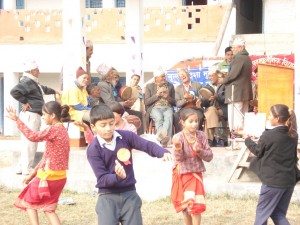Environmental Education in Nepal

Originally appears in the Summer 2007 issue
Perched at “the top of the world” on the southern slopes of the Himalayas and landlocked between China and India, Nepal is a land of geographical and social diversity. The highest mountain peaks in the world rise from its broad valleys and flat plains; and its 147,181 square kilometers are inhabited by more then 23 million people of diverse ethnic, caste, linguistic and religious communities. But this culturally and geographically diverse country is threatened by rapid environmental degradation. Nepal’s physiographic characteristics make it particularly vulnerable to land degradation caused by soil erosion, landslides, floods and sedimentation; and dramatic variations in conditions within short distances create a patchwork of habitats that make biodiversity very fragile.
Increased population levels in Nepal are also having dramatic effects on the environment in both rural and urban areas. In rural areas, these include forest depletion, fragmentation of land into smaller holdings, changes in cropping patterns with a move to higher yielding crops, an increase in the use of agro-chemicals and livestock, and loss of fertile agricultural land. Another concern in rural areas is indoor air pollution resulting from the use of wood, cow dung and agricultural residues as sources of energy for cooking and heating, particularly in poorly ventilated houses. In cities, rapid migration of people from rural areas has resulted in haphazard patterns of settlement. This, coupled with the increasing number of vehicles, a concentration of industries in the cities, poor waste management practices, the disposal of raw sewage, and the malfunctioning of existing sewer systems, is causing serious air, water and noise pollution in urban areas.
This content is restricted to subscribers only.
If you are not yet a subscriber, please consider taking out a subscription here.
If you are an existing subscriber, kindly log in or contact us at info@greenteacher.com for more information.





